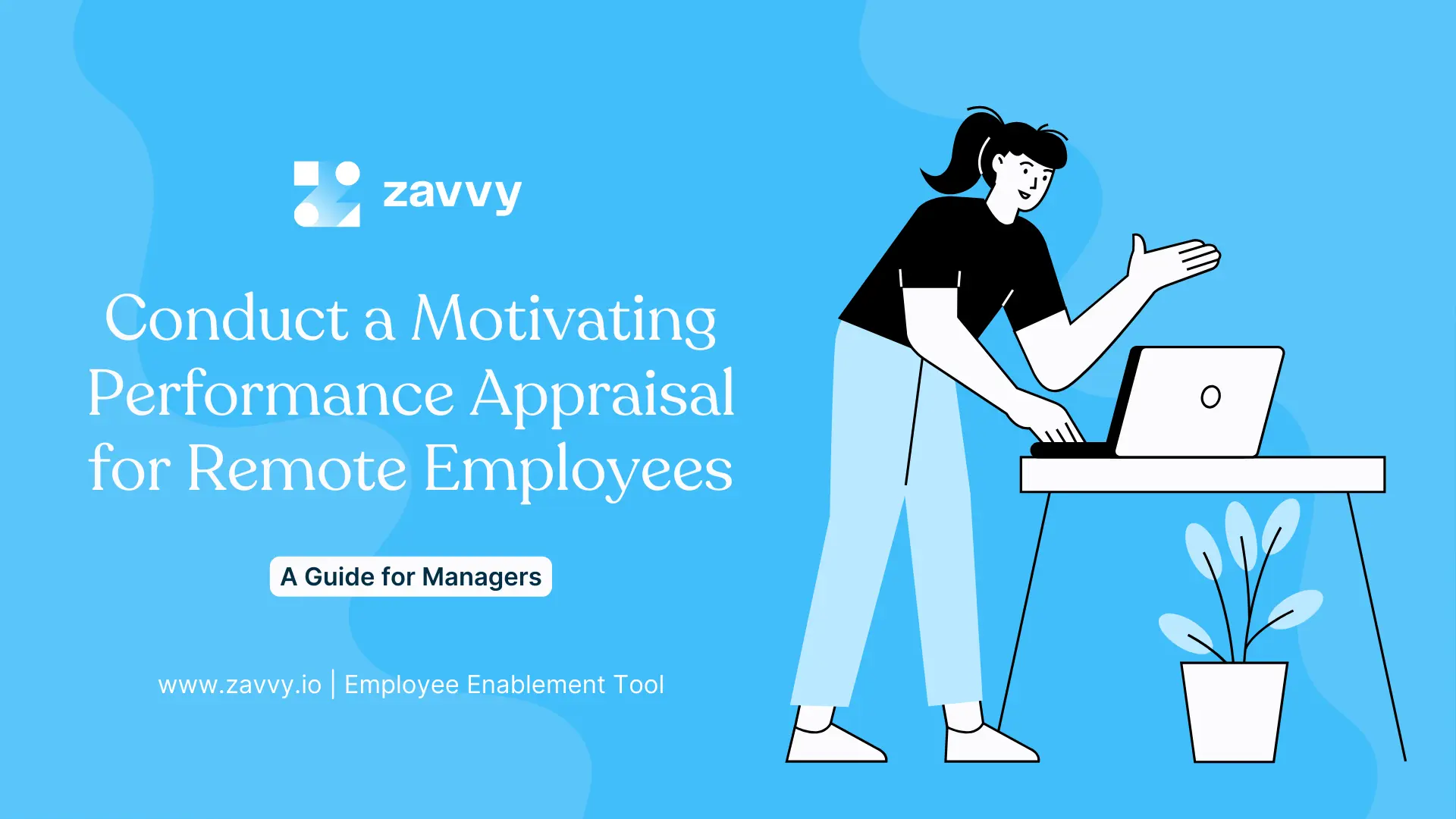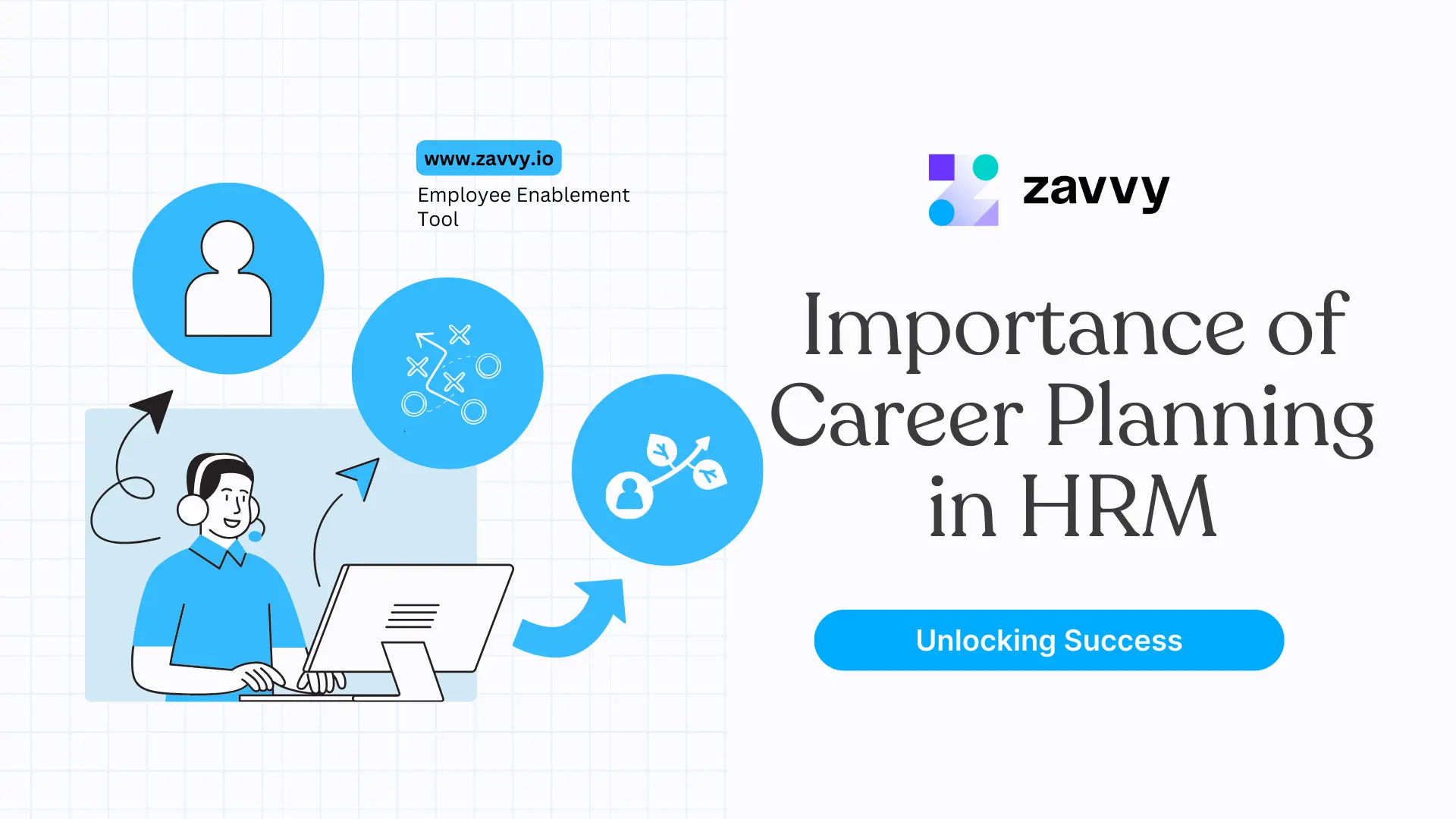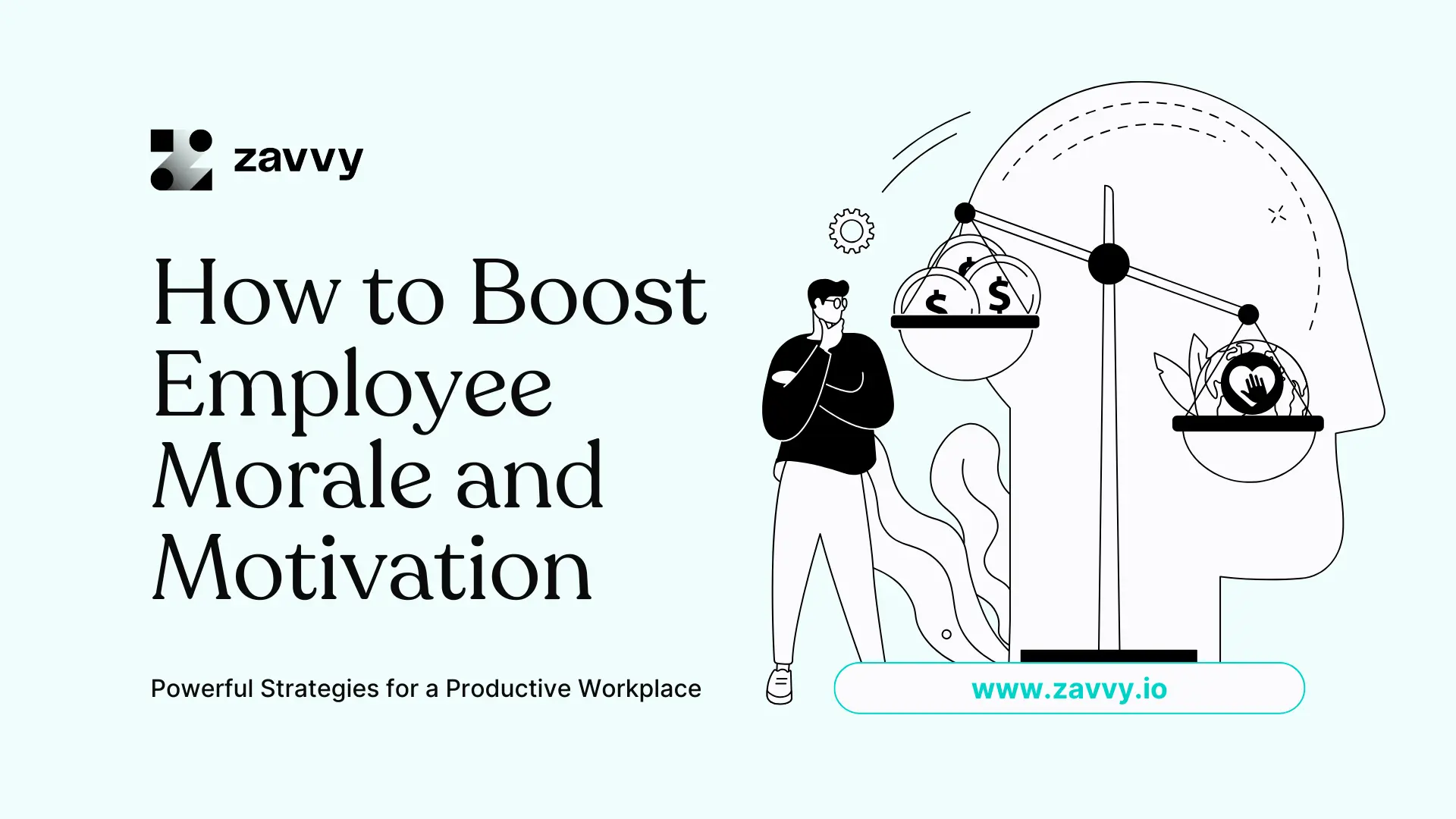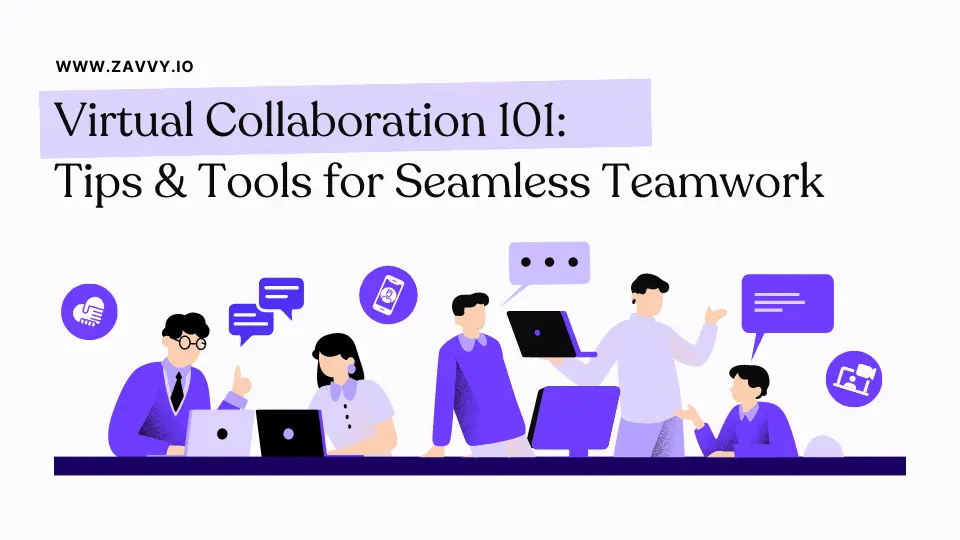
How to Take Your Performance Management System to the Next Level: A Complete and Easy Guide
Zuletzt aktualisiert:
3.1.2024
Lesezeit:
14 minutes
última actualización
3.1.2024
tiempo de lectura
14 minutes
Last updated:
January 3, 2024
Time to read:
14 minutes

What does your current performance management system look like?
For some—perhaps most—organizations, management examines and measures employees' performance at the end of the year. Employees receive appraisal reports and salary revisions, and top performers receive bonuses. And that's it.
It's a conventional approach to performance management.
One that leaves little room to improve employees' performance and influence their growth.
Are you ready to elevate your performance management system and drive success for your organization? Look no further!
This comprehensive and user-friendly guide will show you the steps to take your performance management process to new heights.
Say goodbye to outdated methods and hello to a streamlined, effective system.

📈 What is an employee performance management system?
An employee performance management system is a set of complementary processes aiming to evaluate and improve individual and team performance.
It ensures that employees work effectively toward your organization's mission, vision, and objectives.
It involves taking actions such as:
- Aligning employees' and teams' goals with the organization's strategic goals.
- Reviewing and assessing their progress toward these goals.
- Evaluating employees' strengths and weaknesses and finding ways to help them grow.
- Data-driven decision-making (i.e., regarding promotions, succession planning, compensation, etc.)
- Developing employees' knowledge and skills.
- Providing real-time feedback.

It might sound like we're referring to a performance appraisal. But the two are different.
Employee appraisals measure work performance against a set of pre-established requirements.
In contrast, a performance management system is a proactive approach to improving performance.
🧑 Who are the users of a performance management system?
Everyone's a winner when it comes to a performance management system.

Employees
An accurate evaluation of employees' performance helps create more effective training programs that address their skills gap.
It opens up opportunities for growth and career advancement.
Besides, an effective performance management system improves an organization's communication quality, which enables:
- Clarity on goals and expectations for employees.
- Understanding how their performance fits into the organization's objectives.
- A clear path on how to perform better and develop competencies.
- Get acknowledgment for their hard work.
All these boost their motivation and productivity, which makes them happier and more engaged.
Managers
With a methodical performance management system, managers can identify areas where performance is excelling or lacking.
It helps them mitigate performance risk. And avoid pitfalls that can compromise the achievement of the organization's objectives.
HR and People Ops
A performance management system helps the HR department with workforce planning:
- HR can identify any requirements for extra staff by discussing current and future workloads with employees.
- They can make data-driven decisions: selecting employees for promotions and matching the right employee with a suitable role.
- They can also identify employees at risk of leaving and create a more effective retention strategy.
🏆 What are the benefits of a performance management system
Improved performance management leads to employee and organizational growth.

1. It helps organizations understand employee performance
An effective performance management system enables you to keep track of your employees' performance and understand the larger picture behind it.
By holding regular one-on-one conversations with employees, you get details about their (under)performance. These are details that data from an annual performance review cannot provide.
For instance:
- Are they receiving ongoing support?
- Do they have manageable workloads?
- Do they have the resources they need?
- Is there a lack of role clarity?
- Is their mental health right?
It gets easier to know why they performed the way they did. And you can provide the proper support to get them back on track and enable their talent.
Even better, you're able to highlight any training needs.
Whether it's getting up to speed with the latest trends or brushing up on a few skills, you can continuously keep track of training requirements.

2. It enables a high-performance culture
Each employee has unique abilities, talents, and experiences. An agile performance management system provides a clear understanding of each person's strengths.
As a result, you can create powerful teams of people with varying strengths or assign projects based on employees' abilities.

Besides, the very nature of the performance management system process is a driver of a high-performance culture, as it involves:
- 🎯 Setting SMART goals that align employees with company objectives.
- 💪 Continuous performance coaching.
- 💬 Frequent feedback.
- 👏 Acknowledging good performance. 37% of employees say personal recognition can motivate them to perform better.
- 📚 Establishing a culture of learning to build on employees' strengths and develop their skills and talents.
- 🚀 Encouraging continuous improvement for employees.
- 💼 Offering opportunities for professional development and career advancement.

3. It makes it easier to track vital talent metrics
An effective performance management system enables more informed and strategic talent management decisions. The credible data you collect from consistently monitoring employees' performance makes it possible:
- You can optimize your method of filling talent gaps and developing and retaining top talent.
- And by assessing the right talent metrics, you can better decide who's ready for more challenging tasks in the form of a promotion.
- Evaluating how much training these employees need to handle the extra responsibilities also becomes easier.
- Plus, you'll have a more transparent and fair selection process which will build your employees' trust.
➡️ Learn why performance management and talent management are inextricably linked processes.
🪜 What are the 5 stages of a performance management process?
Five interconnected stages help management manage employees' performance properly.

1. Planning
Agile performance management starts with proper planning.
An essential planning activity is reaching a consensus with employees on SMART goals.
The goals should align with the big picture. So, outline the company goals first, then set employee and team goals.
While at it, assess if an update or revision of the employee's job description and role profile is necessary to make it current and relevant to the organization's objectives.
Tip: Assign stretch goals to push performance and set the tone for ongoing development.
2. Monitoring
Once you have a solid plan, continuous monitoring will make it successful.
Track progress towards the goals set in the planning stage.
Tip #1: Set a continuous feedback system and encourage ongoing communication.
So be sure to hold regular 1:1 conversations and check-ins to discuss performance.

Tip #2: Find out if any roadblocks hinder goal progress. And provide necessary resources to motivate productivity.
Tip #3: Take corrective actions immediately when an event occurs. Don't wait until the end of the year to bring it up.
3. Reviewing
The review stage is where you measure employee performance. It involves a comprehensive evaluation of the results and the process that led to these results.
If you took full advantage of the monitoring stage, the reviewing stage should be a breeze.
You'll have a better picture of the employees' performance. You'll know their successes and shortcomings in performing their role and achieving the set goals.
Analyze if the employee overachieved or underachieved. And what caused it.
Did the organization provide adequate support? Were the goals achievable? Did they use the best processes?
Tip #1: Once you carry out the evaluation, provide feedback for improvement.
Tip #2: Pinpoint the lessons learned and agree on an efficient roadmap to improve future performance.
Tip #3: The review stage is also an excellent opportunity to improve your employee development plan.
Answer these questions:
- Did the employee have the right skills to perform optimally?
- Based on past performance, how well have they developed?
- Has the training they've received been of help in completing the project?
- What other skills would boost their performance?
Tip #4: Have the employees assess their performance first to get their perspective. Follow it up with suggestions on areas and ways to improve.
4. Rewarding
Rewarding the efforts of employees who meet their goals or overachieve is essential.
You could give a pay increase, a cash reward, a promotion, company-wide acknowledgments—whatever works for your company. Extra vacation days, a dedicated parking spot, and increased vacation time work too.
Rewards communicate that your organization values employees' input.
It motivates high-performing employees to use their talent and skills to achieve organizational goals. It also encourages the rest of the team to put in the work needed to achieve optimal performance.
Tip #1: Remember that employees know the high-performers among them. So, make the rewards fair.
Tip #2: Seeing undeserving colleagues receive rewards could make employees lose motivation.
5. Acting
Check if the employees continue with the positive behaviors highlighted in the review stage.
Play your part too in implementing the development plan.
Work on developing your employees' skills and abilities to help them boost their performance in the evolving workplace.
➡️ Discover nine performance management trends that can boost your employees' performance.
🕵️♀️ How do you create an effective performance management system? 7 Best practices
1. Set the right goals and objectives
Approach goal-setting with thought and intention. Individual goals help employees align their work with organizational priorities and objectives.
They clarify what matters, and this helps employees plan. They're able to complete tasks on time and in a logical order. It keeps their performance on the right track.
Besides, employees feel part of the business's success when they know how their goals align with the organizational goals. And this keeps them motivated.
Be sure to involve employees in goal-setting. It'll inspire a sense of ownership and commitment, making them more likely to achieve them.
🔍 Learn the difference between performance and development goals and how they contribute to overall business goals.
2. Encourage ongoing communication
Open and ongoing conversations help managers get a complete picture of employees' performance.
They can ask and answer questions, discuss solutions, and collaborate with the employee on a development plan.
Encourage monthly employee-manager 1:1 conversations. Weekly check-ins are essential as well.
These interactions should be:
- future-focused;
- inclusive of the employee's opinions;
- developmental;
- well-aligned with the career goals and aspirations of the employee.
These conversations help build more effective relationships and inspire growth.
Tip: Document your meetings. Write down the key decisions and information discussed in the sessions for easier follow-up.

3. Conduct effective performance reviews
Performance reviews are one of the vital pillars of an effective performance management system.
It's where managers assess employees' performance against set goals.
An effective performance review is a two-way and personalized conversation between a manager and an employee where:
- The manager helps employees understand their strengths and weaknesses and collaborate on a roadmap to improve their performance.
- The employee feels comfortable enough to open up about their challenges in carrying out their duties and achieving their goals.
Tip #1: Take performance reviews as a chance to correct performance issues before they snowball into major problems.
Tip #2: For employees with recurring performance issues, use performance improvement plans to support their development.

4. Recognition
Recognition makes employees feel valued and encourages them to alter their behavior to more desirable actions.
If you play your cards right, you'll not have to push them to go the extra mile for better performance outcomes.
It's also a great strategy to boost your retention rates.
About 25% of employees say recognition from their supervisors would make them stay with their current employer.
Tip #1: It's essential to adopt the right recognition strategy, i.e., one that aligns with your business goals.
If your recognition strategy encourages positive actions that align with your business goals, you can achieve these goals faster.
You don't have to wait for major accomplishments to recognize employees. A frequent 'thank you' can go a long way in driving better performance.
Tip #2: Always tie recognition to a specific accomplishment or behavior. And make it timely.
💡 Check out these 42 employee recognition ideas to boost the effectiveness of your performance management system.
5. Adopt 360-degree feedback
Managers and supervisors don't always have a direct line of sight and frequent interactions with employees.
For this reason, their feedback does not give a well-rounded view of an employee's competencies and behavior.
💪 Cue 360-degree feedback (multi-rater feedback).
Feedback from colleagues, supervisors, subordinates, and customers provides unique and diverse insights into their strengths and weaknesses.
It paints a comprehensive picture of the employee's performance.
Tip #1: For the 360-degree feedback framework to work, build a culture of trust in your organization.
People need to feel secure enough to provide honest feedback.
Fostering open communication, transparency, and positive interpersonal relationships are some of the ways you can lay the foundations of trust.
Tip #2: Ensure your 360 review survey questions focus on skills and behaviors that impact your organization's goals and objectives.

6. Learning and development
Personalized L&D programs aligning with the employee's professional goals make them feel they're growing.
It creates a feeling of individual success, building engagement and fueling performance.
Besides, the right learning opportunities reskill and upskill employees. It makes their contribution to the organization's objectives more valuable.
Tip #1: Training doesn't have to be dull and tedious. Find ways to make it hassle-free and engaging for employees.
Tip #2: Software like Zavvy's learning management system can give your L&D programs a modern approach. It incorporates current learning formats like microlearning and spaced repetition. You can encourage collaboration through group activities and more.

7. Coaching and mentoring
Employee performance coaching and mentorship programs are among the best ways to achieve ongoing development in your workforce.
For this reason, an effective performance management system should position managers as coaches and mentors.
By monitoring employees' performance, managers can tell what motivates them and where they struggle.
Tip: They can provide ongoing support and create a personalized road map that guides employees toward their full potential.
🏢 5 Examples of performance management systems
Lots of companies have a sturdy performance management system in place.
Most are anchored to the five critical functions—planning, monitoring, reviewing, rewarding, and acting.
AstraZeneca
AstraZeneca targets to build a robust learning and development culture that promotes growth for employees at all levels by 2025.
To this end, its performance management system covers:
- Stage 1: Business roles
- Stage 2: Performance planning
- Stage 3: Performance development
- Stage 4: Performance improvement

The process starts by ensuring employees get clarity around job expectations.
With this clarity, the manager and employee work together on the next stage, setting goals.
Next, they collaborate on an action plan to develop the employee's performance and competencies to meet these goals and job expectations.
Managers regularly check the employee's performance against outcomes and corrective actions taken where necessary.
The last stage involves an analysis of the entire period. The manager assesses how the employee implemented the action plan and which goals they achieved.
They take note of the employee's skills gaps and weaknesses. Based on this information, a new cycle begins with a new performance plan.
Pfizer
Pfizer Inc. follows a similar performance management system. But with a reward stage.
After a review of the employee's performance, top performers get recognition.
The stages involved are:
- Stage 1: Performance planning
- Stage 2: Development planning
- Stage 3: Performance review
- Stage 4: Total compensation

Coaching and feedback are an integral part of Pfizer's performance management system.
Halifax Bank
Halifax Bank is not entirely different. It relies heavily on performance and development planning to improve employees' performance.

The managers use an employee scorecard to review performance. Plus, they act as coaches, providing regular feedback and support to ensure employees stay on track.
Cisco
You can develop an even more robust performance management system with a people-focused approach.
It's the way to create a high-performance culture in your organization.
Take Cisco, for instance.
The company uses proprietary technology to collect valuable data on its workforce that show how each employee is unique.
It makes it easier for management to create a practical development plan that plays to employees' strengths.

📡 Here's a detailed case study of employee performance reviews at Cisco.
Netflix
Netflix takes a more radical approach to its performance management system.
A non-anonymous 360-degree feedback system and complete transparency have created a team of high-performers for the company.
How does Netflix ensure the effectiveness of the non-anonymous 360-degree feedback? It follows a 4A framework:
- The feedback providers must 'aim to assist' and provide 'actionable' feedback.
- The feedback recipients should 'appreciate' the input but with the luxury of either 'accepting or discarding' it.
.png)
The management at Netflix challenges underperformance directly. And managers use the "Keeper Test" when letting go of chronically underperforming employees.
🎥 Learn more from our case study of employee performance reviews at Netflix.
➡️ Manage performance with Zavvy: Your all-in-one enablement suite
A sound performance management system combines the right processes with the right software to boost employee performance and achieve business objectives.
Here's a quick guide to implementing a modern performance management system effectively:
- Elevate your appraisal processes to a more flexible approach. Use Zavvy's performance review software to give your managers and admins complete power over question types, visibility, anonymity settings, and more.
- Collect qualitative and quantitative insights into an employee's performance.
- Make your promotions unbiased and transparent by creating a meaningful pathway for career progression with our effective career pathing software.
- Identify existing skills gaps and use our skills matrix software to develop an effective L&D program that strengthens your human capital.
- Equip your managers with the proper training and turn them into inspirational coaches and mentors.
It's time to unlock a meaningful employee performance review system that fits your organization's values and goals. Book a demo today.

❓ FAQs
What is the definition of an employee performance management system?
It's a continuous and methodical process that aims to improve individual and team performance. It ensures that employees are working effectively towards the organization's objectives.
Management by objective is part of which type of performance appraisal system?
Management by objective is a modern and strategic approach to performance appraisal. The manager and employee work together to set up SMART goals for the employee and an action plan to achieve them.
The manager monitors and evaluates the employee's progress and rewards their achievement.
Why is a performance management system superior to a performance measurement system?
A performance measurement system uses a set of metrics to quantify the efficiency and effectiveness of an employee's actions and evaluate their performance. Its focus is on past performance.
A performance management system is a continuous and methodical process. It works to manage and keep the performance of employees in check for the achievement of the organization's goals. Plus, it's future-focused, which makes it superior.
Read our in-depth analysis of performance management vs. performance measurement.
What are the main components of an agile performance management system?
A performance management process involves five stages:
- planning;
- monitoring;
- reviewing;
- rewarding;
- acting.
What characteristics, at a minimum, should we include in a performance management system?
Essential characteristics of an effective performance management system include:
- SMART employee goals that align with company goals;
- ongoing communication;
- performance reviews;
- recognition;
- 360-degree feedback;
- learning and development;
- coaching and mentoring.
What are the different types of performance management systems?
Some of the commonly used performance management systems include:
- Ranking: A system that uses performance to rank employees in from highest to lowest performing.
- 360-degree feedback: Collects data about an employee's strengths and weaknesses from supervisors, peers, and subordinates.
- Goals tracking: Managers evaluate performance by looking at progress towards set goals.
- Competency-based: This involves assessing an employee's performance against specified skills.
What does your performance management system need most?
Your performance management system needs:
- clear goals and expectations;
- regular feedback;
- employee involvement and empowerment;
- data-driven decision-making;
- continuous improvement.
Read next
Als Nächstes lesen
No items found.
No items found.
.png)





















.png)
























